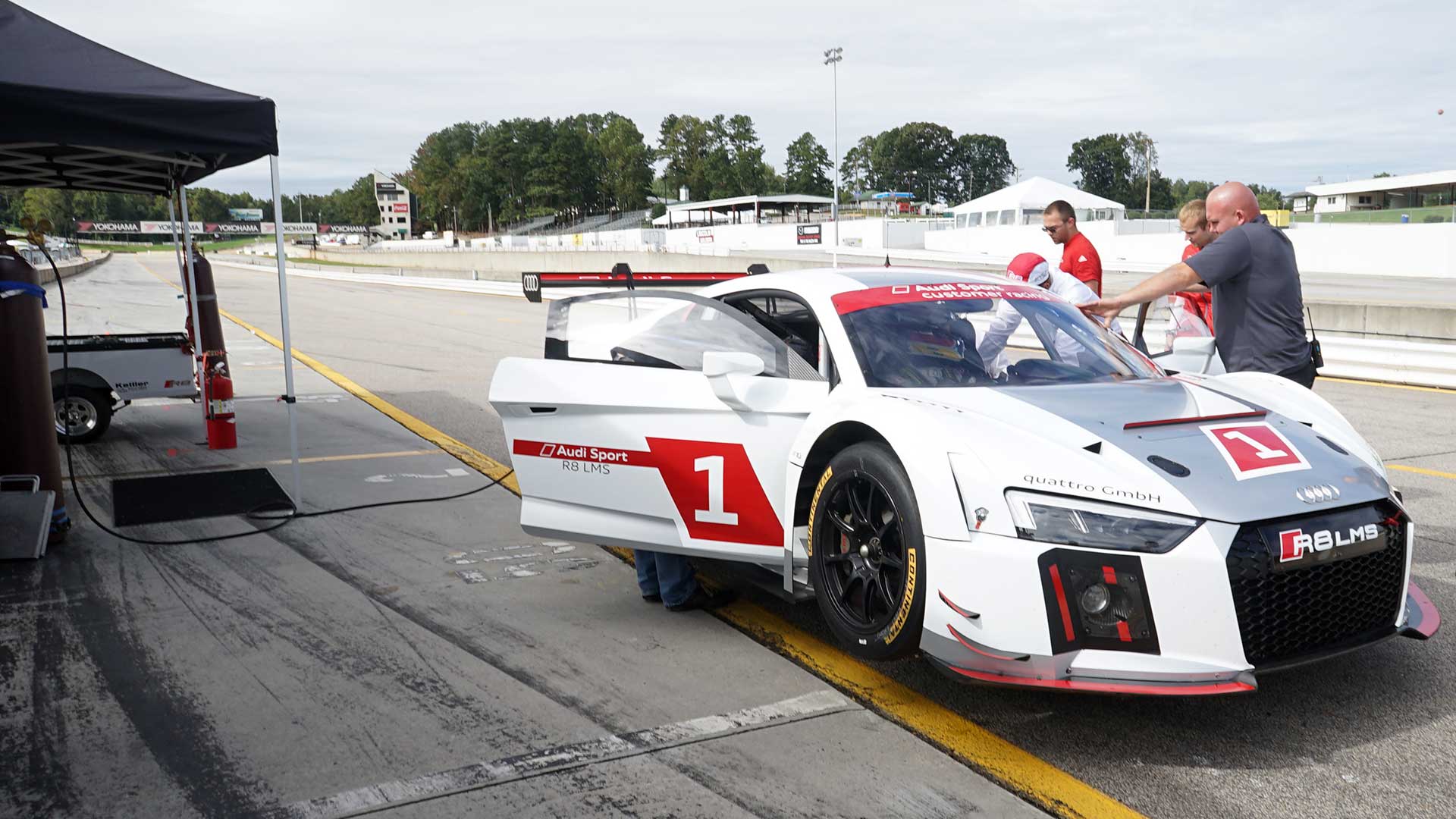We may earn revenue from the products available on this page and participate in affiliate programs. Learn more ›
The scene: Road Atlanta in Braselton, Georgia. Twelve turns, a lot of them blind. That’s 2.54 miles of terrifying, high-velocity pavement.
The car: Audi’s new R8 LMS racer, a customer competition vehicle that you, reader, can purchase for $492,000, and campaign professionally in any GT3 series on earth.
The driver: Yours truly, A.J. Baime, The Drive’s editor-at-large. I have never driven this race car. I have never been on this track. In fact, no American journalist has ever tested this car on a racetrack. I’ll be only the second in the world, I’m told.
We arrive at Road Atlanta on Tuesday morning under the threat of rain clouds. The grandstands are empty, the grounds littered with trash from the previous weekend’s Petit Le Mans. On pit lane, Audi engineers are busy working on the R8 LMS. It’s a beautiful thing, dressed up in familiar livery. A mere glance gets the engine in your ribcage thumping.
All day, professional drivers—potential customers for next season—lap the track, one at a time, shaking down the machine at blistering speed. Audi will only produce about 45 of these cars over the next year. You’ll some of these drivers in this car on television next season.


















The idea behind this rocket ship is smart and simple: Offer a race car that, out of the box, is competition ready, with backend support as part of the package. Audi mechanics will be present at races where this car will compete. So part of the price of the car is a slice of the juju that has won the 24 Hours of Le Mans over a dozen times since 1999.
The R8 LMS marks the second-generation racecar, built on the bones of the new R8 road car. The first-gen car won seven 24-hour endurance races between 2009 and 2014. Fittingly, this new one will make its U.S. competition debut at the Rolex 24 at Daytona in January.
Stats for the new machine: Rear-wheel drive, 585 horsepower from a naturally aspirated V-10. Audi claims that the 5.2 liter can run a full season, about 12,500 miles, before it needs a rebuild. You get six gears, with a clutch for first and then lightning-fast paddle shifting from there. The new LMS weighs 2,700 lbs—about 600 less than a NASCAR Sprint Cup car.
Top speed? I don’t know. It’s fast.
At about 4 p.m., it’s finally my turn to jump in the cockpit. Inside, the LMS is all business: one seat, roll cage and a steering wheel that resembles that of a Formula 1 car. Having not even a single recon lap at this notoriously technical circuit, I can’t shake the sensation I’m about to wreck this thing and, with it, my reputation for eternity. The track steward gives me the signal. I respond with a thumbs-up.
What happens next? The video tells all.

